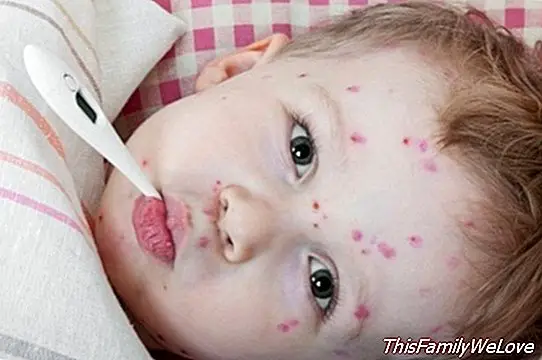Chicken pox, treatment for children

The most visible sign of chickenpox is a rash that develops on the head and body of the child, and that spreads to the face, arms, legs, genitals and even appear lesions in the mouth, in a period of 3 to 4 days. Varicella rash is very pruritic, that is, it stings a lot. This eruption forms 250 to 500 small blisters, which break releasing a very contagious clear liquid, which dry to crust in a period of 2 to 4 days.
Children of school age usually have a fever mild, one or two days before the rash appears. Other symptoms of chickenpox are chills, loss of appetite, dizziness, nausea, vomiting and headache.
Chicken pox, treatment for children
Today, for chickenpox there is no curative treatment. The medication is supportive with antipyretics; aspirin should not be used, as it may increase the risk of Reye's syndrome (brain or liver damage); baths to keep the skin clean; cut and clean the nails well to avoid scratching infections; and menthol talc or antipruritic lotions, indicated by the pediatrician.
When chickenpox gets complicated
The most frequent complication is Bacterial superinfection of lesions, which require treatment with antibiotics. More rare is the appearance of chickenpox pneumonia, which can be fatal in patients with decreased immunological defenses (immunocompromised).
The varicella vaccine is the only way to immunize children against the disease. When you reach 12 years without having suffered, is when it becomes mandatory to administer the varicella vaccine, because this disease in adults is more serious, extensive and lasting, to produce our body less amount of interferon gamma.
Chickenpox in adults
When a teenager or an adult develops chickenpox, the disease can develop pneumonia. Adults are 10 times more likely to need hospitalization and 20 times more likely to die from chickenpox than those under 14 years of age.
It is important to avoid contact with pregnant women, who have not had chicken pox, in the first trimester of pregnancy, since fetal malformations can occur. Although now they can be treated with polyvalent standard gamma globulin, or with acyclovir in the first days of contact, blocking the onset of the disease.
Risk population
- People with weak immune system.
- Children under one year.
- Adolescents and adults.
- Newborns, whose mothers had chickenpox before delivery.
- Premature, whose mother has not had chickenpox.
- Children with skin problems.
- Children who are treated with aspirin.
Vicen Ramón




